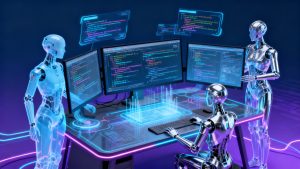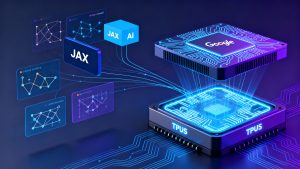Artificial Intelligence (AI) is not just enhancing the tools enterprises use—it is fundamentally reshaping how software is conceived, built, and deployed. At the forefront of this transformation is OpenAI, guiding a rapid evolution in the way development teams approach product lifecycles and engineering strategies across industries.
Rethinking Traditional Development Cycles
OpenAI’s Asia-Pacific go-to-market lead, Andy Brown, recently shared insights during Tech Week Singapore 2025, shedding light on how AI is changing enterprise engineering operations. He noted that many organizations are moving away from prolonged sprint-based models that emphasize task completion volume, instead returning to refined, product-centric release cycles.
In conversations following the event, Brown explained that CTOs and technical leaders are now embracing an “always on” release culture, driven largely by AI capabilities. Through AI-assisted automation, companies like OpenAI have achieved unprecedented velocity—deploying multiple updates within just days. According to Brown, this new speed stems from AI’s ability to streamline engineering, testing, and deployment processes simultaneously.
The Role of AI Tools in Rapid Prototyping
One illustration of this accelerated innovation is OpenAI’s Agent Builder platform—a drag-and-drop environment that enables users to design custom AI agents effortlessly. Remarkably, 80% of the platform’s code was generated by AI, and the initial build was completed in roughly six weeks.
This project exemplifies how AI is compressing development timelines and redefining what’s possible for software teams. Rather than spending months on prototyping or debugging, developers can leverage intelligent systems to automate code generation, testing, and refinement.
AI Compressing the Innovation Cycle
Brown emphasized how quickly AI capability growth has intensified. What once took one to two years to evolve now happens within a couple of months. “There has been an incredible compression in AI model capabilities,” he stated, pointing to how each leap in AI performance drastically shortens release cycles and scalability timelines for enterprises.
With continuous learning and self-improvement baked into next-generation AI models, businesses are now forced to rethink not just their engineering processes, but also how they manage product evolution, versioning, and upgrades.
Industry-Wide Acceleration Among AI Leaders
The rapid pace isn’t unique to OpenAI. Major players such as Anthropic and Google are pushing AI development boundaries with equally shortened release schedules.
- OpenAI: Released GPT-4o in May, quickly followed by real-time voice, in-chat image generation, and a marketplace for AI applications—showing how adaptive engineering has become central to its ecosystem.
- Google: Announced over two dozen new AI updates during its developer conference, with CEO Sundar Pichai highlighting that “we are shipping faster than ever.”
- Anthropic: Launched Claude Sonnet 4.5 just four months after Sonnet 4, reflecting the firm’s competitive pace in generative AI advancement.
These waves of releases underscore the shift toward hyper-agile development models where innovation is no longer linear but continuous and iterative.
The Competitive Imperative: Adapt or Be Left Behind
As artificial intelligence permeates every layer of the software ecosystem, companies that fail to adapt risk lagging behind. Traditional long-cycle development methods are proving too slow for an AI-driven marketplace where speed, iteration, and user responsiveness define success.
Organizations integrating AI into their development pipelines are discovering significant productivity dividends—from automated code generation and enhanced testing coverage to predictive infrastructure management. The result is a new paradigm where software teams can innovate faster, reduce development overhead, and focus more resources on product creativity and strategic growth.
Building the Future of AI-Enhanced Development
The AI revolution is more than a technological shift—it’s an operational renaissance for software companies. By relying on the power of models like those developed by OpenAI, teams can move from linear workflows to dynamic, feedback-driven release cycles.
Brown’s insights point toward a future where development velocity defines competitive advantage, and success will depend on how effectively organizations leverage AI across the entire engineering lifecycle. Companies that embrace this transformation today will not only accelerate their innovation cadence but also lead the next wave of digital evolution.
Read more such articles from our Newsletter here.



